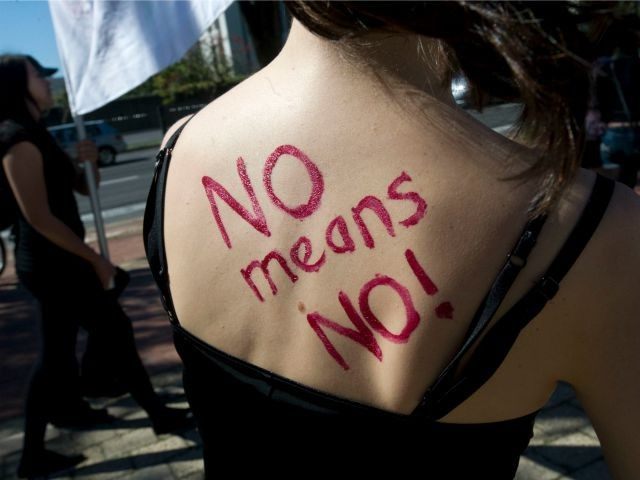From the Duke lacrosse players to the phony fraternity gang rape at UVA, a large cross section of college professors and administrators seem intent on labeling their campuses havens for rape and other sexual crimes.
An enormous new study just out from the Association of American Universities purports to prove that American colleges and universities are awash in sexual assault, rape, and even kissing without proper and ongoing permission.
The “Campus Climate Survey on Sexual Assault and Sexual Misconduct” studied students from 27 universities and claims to have found 11.7 percent of student respondents experienced “nonconsensual sexual contact by physical force, threats of physical force, or incapacitation since they enrolled at their university.”
The incidence of such trauma endured by female students rose to 23.1 percent with 10.8 percent experiencing penetration, according to the study.
The study found the incidence of sexual assault to be similar to other earlier studies, including the one that created the “one in five women in college have been raped” meme.
Perhaps revealingly, 50 percent of the respondents who consider themselves victims of the most serious crimes of forced penetration said they did not report the incident because they didn’t consider it “serious enough.”
The survey defined sexual assault and misconduct with two types of victimization. One type focused on nonconsensual sexual contact involving two behaviors: sexual penetration and sexual touching. Respondents were asked whether one or more of these contacts occurred as a result of four tactics: (1) physical force or threat of physical force, (2) being incapacitated because of drugs, alcohol or being unconscious, asleep or passed out, (3) coercive threats of non-physical harm or promised rewards, and (4) failure to obtain affirmative consent. The first two tactics generally meet legal definitions of rape (penetration) and sexual battery (sexual touching). The other two tactics are violations of student codes of conduct. The second type of victimization focused on sexual harassment, stalking, and intimate partner violence (IPV). The definitions of these different tactics are provided below when data are presented on their prevalence.
Survey authors found 150,000 students willing to answer the survey, often with incentives of money or being entered into a drawing. The 150,000 represent a relatively small, 19 percent response rate of the total universe of 779,000 students among the 27 universities. Other similar studies cited in this one had response rate of between 30 percent and 80 percent.
The survey looked at “penetration” but also “sexual touching” — including kissing — that is considered “sexual battery.”
The report showed that alcohol is a serious problem, as 5.4 percent reported penetration while drunk, which is only slightly less than the 5.7 percent who reported penetration due to physical force.
What will be the most controversial portion of the report is on “non-consensual sexual contact by absence of affirmative consent” including “ignoring your cues to stop or slow down [emphasis added], “went ahead without checking in [emphasis added] or while you were still deciding,” or “otherwise failed to obtain your consent.” The “failure to check in” seems to suggest that every button, zipper, sock and shoe require ongoing affirmative consent.
The study also looked at sexual harassment that includes telling jokes or stories that the student finds “insulting” or “offensive” and continued to ask you out on dates even after you said “no.”
The study also looked at “Intimate Partner Violence” that oddly defined “a partner relationship” as including someone you had only hooked up with. Offenses here included making “decisions for you such as, where you go or what you wear or eat.”
To be sure, the survey looked at very serious crimes, though crimes 50 percent of student-victims did not consider serious, leading one to believe that there what administrators consider rape and sexual assault, students might consider hooking up. In fact, the study quite deliberately did not use the terms rape or sexual assault.
Without a doubt this study will be used for the next several years to make the case for a rape culture on American campuses. So eager are administrators and faculty to make this case that they have tended in recent years to quite publicly accuse the innocent and in the process ruin reputations and careers.
The survey does not look at what is probably the far more serious issue of the casual hook-up culture. A 2012 study conducted at Duke University found that 55 percent of female students had sexual relations with someone they didn’t really know in the previous six months.
Follow Austin Ruse on Twitter @austinruse

COMMENTS
Please let us know if you're having issues with commenting.